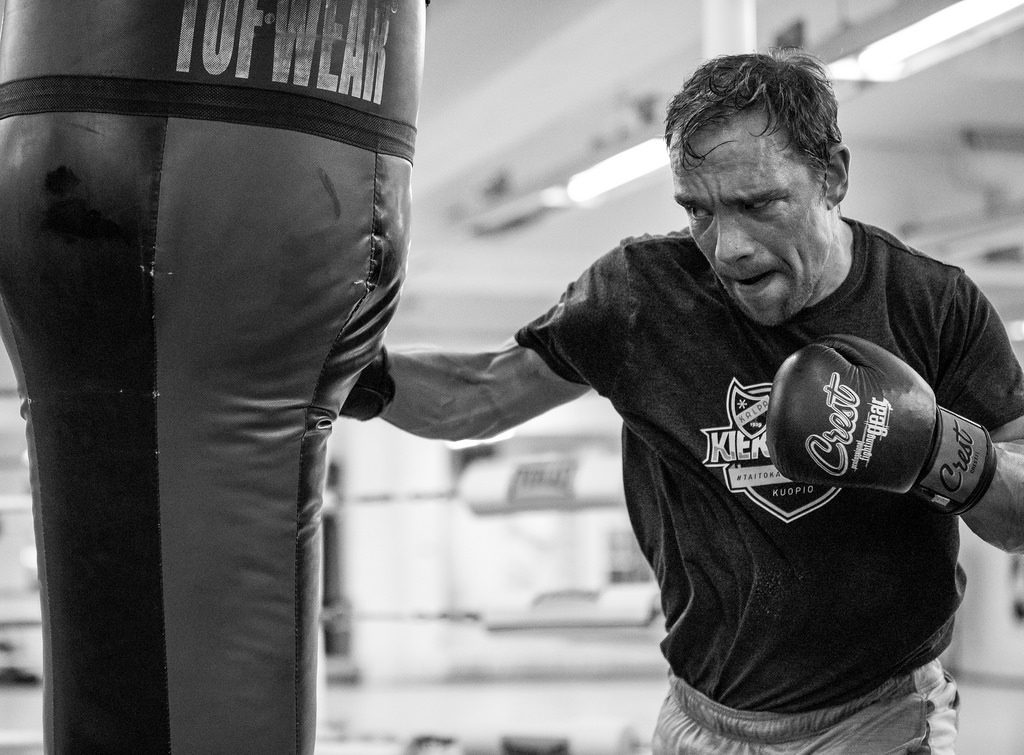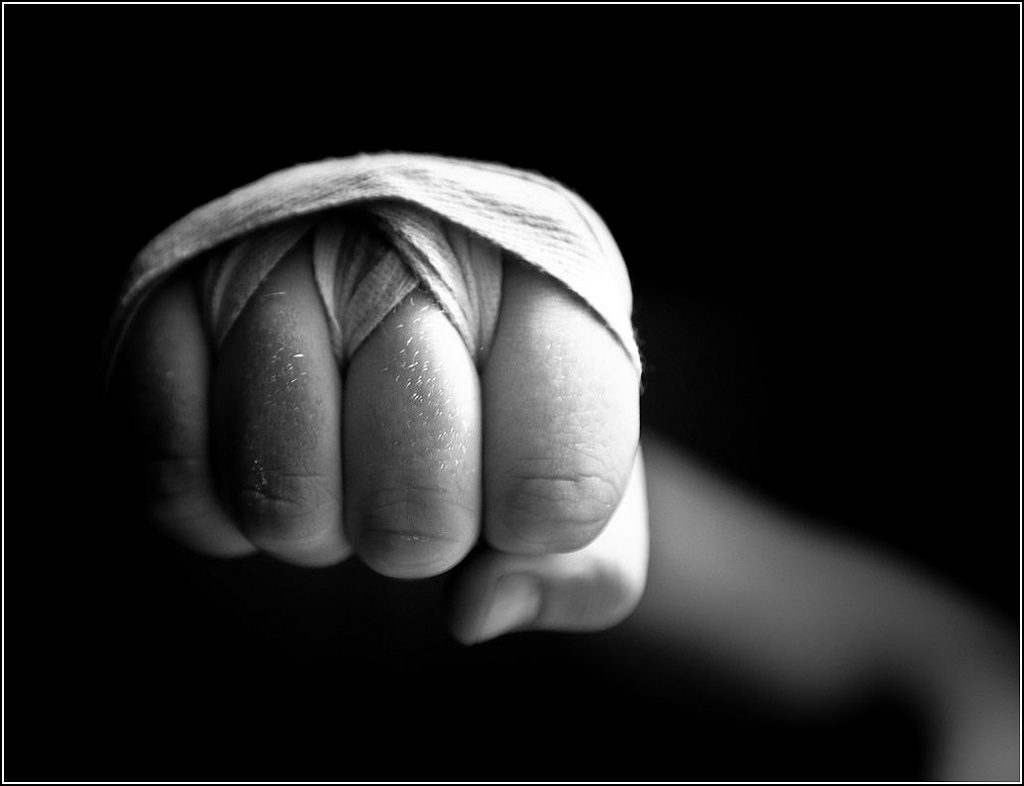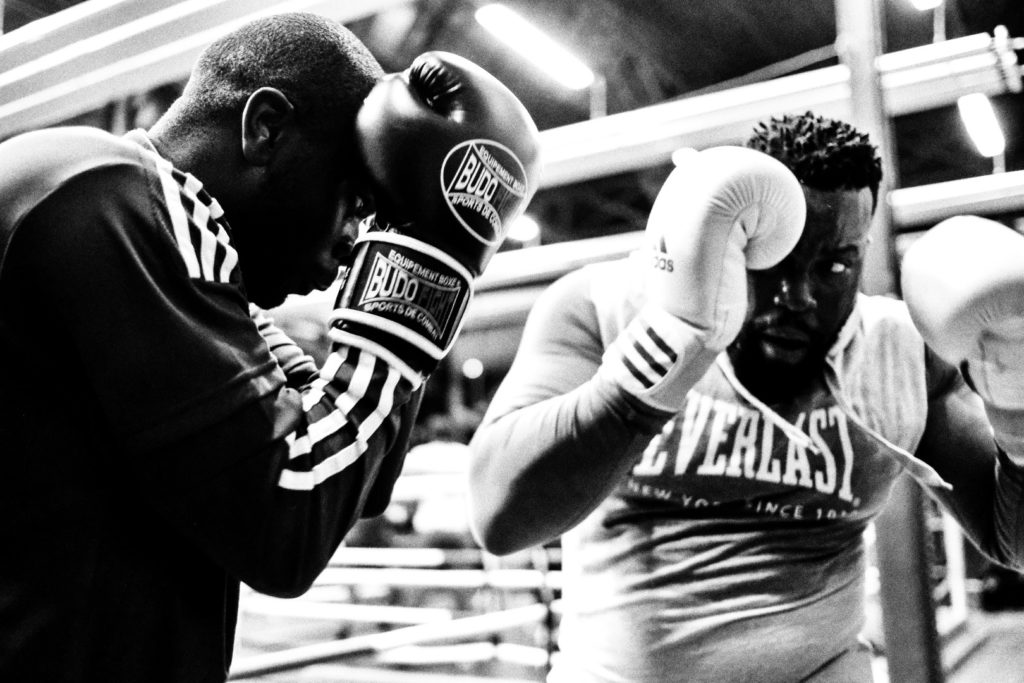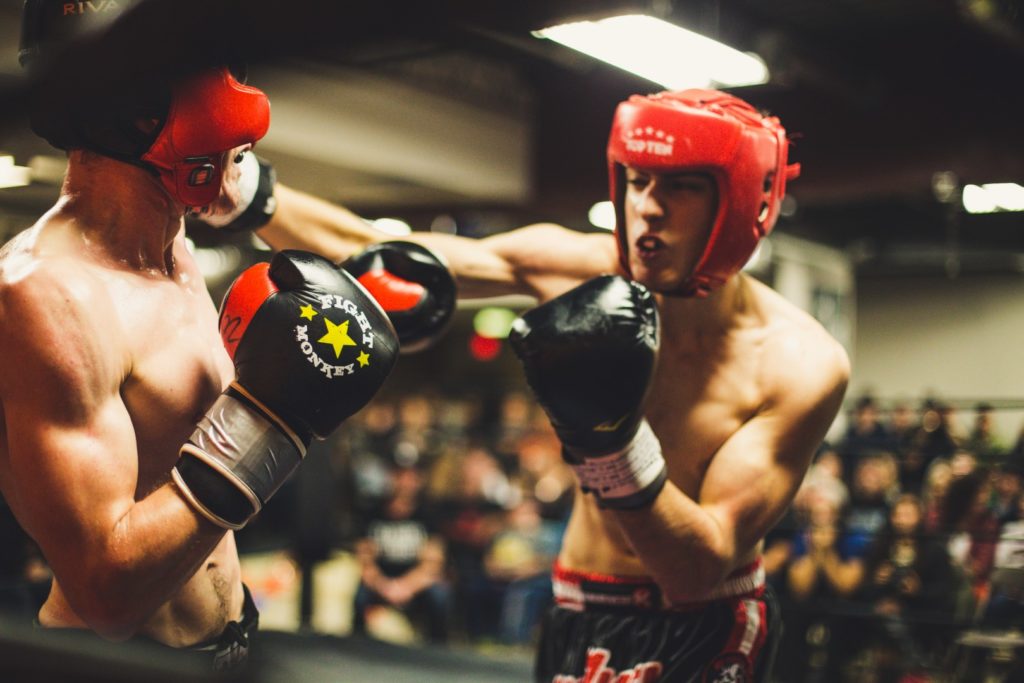Whatever your motivation may be to initially start your run in the ring, signing up to start training at a boxing gym is only the first step.
Although you might think that boxing is a great way to let your anger out and throw a few punches, the sport entails so much more than that. Boxing as a whole requires physical attributes from you that only a high amount of training can bring. Even though your goal might not be to be the best boxer, to perform at your highest level, you should be working on the following attributes during your training: balance, coordination, strength, endurance, footwork and the quality of your punches.
Starting off, we’d like to commend you for taking on a high, physically demanding sport. You’re first few times in the ring or your first workouts might not go on as planned or you might be sore enough that you become discouraged after your first day but the sport is about endurance. If you are truly passionate about taking on boxing as your new sport or fitness regime, there are a few things you should know before you hit the gym.
Most of us don’t have access to a good coach or are not willing to pay the price for one, but we hope that these tips can help guide you for the first must-know aspects of the boxing world. Also, you don’t have to have the best equipment, you just have to give your best effort. Although you might think boxing is about attacking the opponent and beating him to a pulp, defense, focus, and discipline are the three main factors to know before you embark on your potential boxing career.
Here are our 16 tips to get you started as a boxing beginner:
16. Learn Boxing Numbering System – 6 Punches
Photo Credit: icantcu Flickr via Compfight cc
One of the first things you will practice in Kickboxing or Boxing class is the 6 punch boxing numbering system. You may have witness your coach hold mitts for a class member s he calls out numbers from 1 to 6. Each number represents a specific punch. The 6 punch boxing numbering system is the basis for effective match winning combinations used by pros around the world. This system along with proper footwork will give you a heads up during training. Memorize these moves, memorize the number and you will have a much easier time the next time your coach wants to hold mitts for you. Once you have master these numbered punches, you can begin combining them to create awesome allusive and effective combinations that will guarantee the win.
Southpaw |
Orthodox |
| 1.Jab | 1.Jab |
| 2.Cross | 2.Cross |
| 3.Right Hook | 3.Left Hook |
| 4.Left Hook | 4.Right Hook |
| 5.Right Uppercut | 5.Left Uppercut |
| 6.Left Uppercut | 6.Right Uppercut |
15. Don’t Skip out on Fitness
Even as an amateur boxer, running long, medium, and short distances should be a part of your boxing fitness regime. Conditioning is key when you’re heading into the ring. With every punch you throw, you are toning your ability to go longer and longer while maintaining foot coordination. To accomplish these skills and factors in boxing, it is extremely important to have your fitness at the highest level that it can go, that way, you have the best chance in performing well without losing your breath.
As an endurance sport, boxing requires anaerobic fitness. If you are just starting out on this journey, your training should be dedicated to aerobic exercises in your workout half the time. Running is the most highly effective — short distance, sprints, and running should be instilled to improve your explosiveness at 100 percent effort to develop the power and speed you need to dish out a powerful combination, long distance should be to work on your endurance and overall conditioning for your fitness level, and medium distance should be staggered running, like running fast for a few minutes then slow for a few, etc.
14. Use Your Environment and Others, to Learn

Although the sport is an individual one, if you are going to a boxing gym, you are most likely in contact with other boxers more highly skilled than you, more advanced than you and overall, more experienced. Use that to your advantage to perform at your highest level. Even if you are climbing up in the ranks, be humble and make friends, they can always help you with boxing tips. Even if you might be bitter about it, ask the boxer who just beat you how he did it, and that way you will immediately know your weakness.
If you have a coach, they know you best and should be your primary source of information and you should turn to him or her for most of your advise, but keep an ear open for those around you, even though you might not think they are experienced. Just having eyes and watching you spar, spectators may pick up on a weakness you have that they see in your opponent or don’t see in you. Listen to everyone and everything. It’s easy to get an individual mindset since boxing is an individual sport, but you shouldn’t isolate yourself when it comes to improving your technique. Stay humble and stay open.
13. Pay Attention to Your Breathing Technique
 Photo Credit: Samuli Koukku Flickr via Compfight cc
Photo Credit: Samuli Koukku Flickr via Compfight cc
It’s easy to focus too much on the correct form and technique of the punch and then forget to breathe, but this is important and actually part of the technique. One of the most basic fundamentals you should be taught is how to synchronize your breathing with your movements. Having your breathing down is crucial when you are going through the entire workout and need to have energy right to the end. This is done and controlled by the way that you throw a punch. When you’re punching, you should exhale.
Do not, whatever you do, hold your breath. Even if you have to exaggerate when you exhale, do so, but not breathing while you’re punching will catch up with you at the end of the fight or workout, when you’ll be out of breath. Plus, exhaling with every punch can help you get into a rhythm and have your entire body synchronized with each movement, this is also important: your body is a well-oiled machine and should work together as one.
12. Use Your Entire Body
Photo Credit: Samppa_fin Flickr via Compfight cc
As we mentioned before with your conditioning, you will need your entire body in boxing. You should always use your entire body when throwing a punch or jab. Turning your entire body into the movement will get your whole force behind the punch and consequentially not only give you more power but train the whole of your body. Instead of using just the arms, punch as fast as you can turn your entire body, so you won’t have to use the singular power of your arms behind your punch.
This part of your technique is definitely a basic principle that you have to learn in the beginning. Even if you are slow at first, which most people are — so don’t feel left out, you have to learn the technique then at a slow pace. Just like anything in life, you have to learn to crawl before you can walk. Make sure you have your form right and are using your entire body before you progress to quick movements or more advanced sparring.
11. Gotta Keep Your Head Up
Another mistake that you often see just because of basic physics, is that when they’re fighting, most people have a tendency to put their head down and eyes low. Many beginners begin to look towards the floor when they’re punching the bag or sparring. That is such a mistake! Think about it, when you’re fighting, you need to always keep your eye on the guy attempting to hit you. If you don’t, then how will you know where he or she is or what they’re doing?
Keep your head not only up, but moving. It’s a good habit to have because even if you’re taller than your opponent, they usually pay attention to your head to predict what you’re going to do, where you’re going to go, and when you’re going to hit. If you keep your head moving, you’ll be harder to read and make your opponent’s job much more difficult. With your head, you also want to keep your chin tucked in. This is for when your opponent lands a punch. Normally, your head would be rocked backward, which is not a good stance to have, but if your chin is tucked in you’ll be more ready to receive a hit and still keep fighting.
10. Hands up and at the Ready
Photo by Johann Walter Bantz on Unsplash
If you’re a fan of boxing or have just even seen a match before, you might see boxers lowering their arms and letting their guard down. However, since you are just starting out, don’t follow their lead. Always keep your hands up, no matter if you are attacking or defending. Your hands should be high, your elbows should be low, and your head (as mentioned before), should be moving.
Regardless if you are sparring or just practicing with a heavy bag, always try to keep the stance. Our bodies work with muscle memory, so it’s important to try your best to get your mind right and create a habit for your body. Keep your fists right near your chin to be at the ready to protect your face. Even when you’re on the attack, always defend in between combinations, to be ready for him or her to fight back. Just keeping your hands protecting your face can be the difference between winning a K.O. and you lying on your back.
9. Aim for the Entire Body
Although hits to the head are crucial in a boxing match, aiming for the body will be less expected and are definitely influential in a match-up. If you keep your jabs mixed up, your opponent might have to choose between protecting their head or their body. For instance, during your combinations, push a jab to the head but then get as close as possible to throw in a few body punches.
This is not only an advantage for you because it keeps your opponent guessing, but hitting the body of your opponent from every different angle might help you find their weak spot too. Don’t always throw the same punches or combinations. This will make your opponent have to be more mentally alert in protecting themselves. Since they would have to focus so much more, it’s more likely that he or she will get mentally tired quicker than you may have expected. Once the mind is tired, the boxer loses focus and that’s where you can win your match.
8. Work on Your Footwork
One of the key fundamentals of training yourself to become a better boxer. Even though it may seem tedious, never neglect to work on your footwork. Having quality good work will help your balance in the ring. Your foot stance can also protect you from getting a K.O. or being on the other end of it.
If you have quality footwork, your punches will also pack more of a punch and you can quickly dish out combinations. Find your sweet spot of where your feet should be planted to work best and keep them at that distance at all times. Your entire body should be moving with each punch, and that also means your feet. When you throw your punch, your back foot should be pivoting and they should always be in motion. As we mentioned before and will continue to mention, your body should work together at all times.
7. Don’t Always Focus on Strength
One mistake we always see is that beginners want to throw their entire strength into every punch. Even if you are just training with the heavy bag, vary between light punches and keep it simple in the beginning. You don’t have to throw a knockout punch every single time!
Make your combinations filled with a variety of light and hard punches to fake out your opponent and conserve energy. Always be aware, especially when you’re sparring, that the harder your punches are, the harder your opponent will come to hit you. Think of your hard punches as a secret weapon, only use them when you know you’ll land them. Finally, when you’re giving one hundred percent on all your hits, you’ll be trying to use your strength, which will eventually wear out. Punching always at your maximum will deplete your energy quicker.
6. Begin with Shorter Combos
It’s not an all-or-nothing attitude. Once you are beginning, although you might see others landing combinations of eight or more punches. However, when you begin boxing, you don’t need to memorize long, complex combinations. Practicing three to four combinations will suffice for the beginning of your “career”.
Honestly, even if you can remember combinations that contain more punches, you probably aren’t doing them all one hundred percent correct.
Therefore, it’s better to know shorter combinations, but being able to land them with perfection. Learning long combinations also take most of your energy and when you’re tired, you’ll be more open to counters. Have a maximum combination of five punches, but no more than that.
5. Always Keep Yourself Hydrated
Photo Credit: strange_hair Flickr via Compfight cc
Just like any sport, maintaining good hydration is important when beginning or taking part in any sport or athletic hobby. When you box, you’ll sweat profusely, so you have to drink plenty of water before, during, and after training. If you’re thirsty, you’re way too late and should be hydrating much more often and much earlier.
Sometimes, water doesn’t do the trick. For longer training sessions and competitions, drink sodium sports drinks. Try to opt for those with the least amount of sugar or those which are just plain sugary drinks. Sodium is important for those long trainings or competitions because it helps your body regulate how much water it can hold. When you don’t have a sufficient amount of sodium your cells don’t know when it’s time to stop taking in water and will sell up. Obviously, your body shouldn’t be doing that.
4. Sparring Will Help You Grow
Although the beginning will be a little rough, there’s no quicker to learn from your mistakes than if you feel pain from it. That fact should not discourage you, really the only way that you’ll become better at sparring is to get in the ring.
Sparring is when you take all the elements and basics that you’ve learned and use it when you really don’t have time to think. Throwing yourself into the ring, especially as a beginner, is important to do so that you become comfortable being in it. When you’re sparring, you have to combine everything you learned: controlling your breath and using it when you throw punches, keeping your hands to your chin, and moving your head, among many things. Not just training, but sparring helps you develop good habits specifically in the ring. If you want, film your sparring so that you can physically replay and see your mistakes to correct them for later.
3. Learn to Wrap Your Hands
 Photo Credit: xybo Flickr via Compfight cc
Photo Credit: xybo Flickr via Compfight cc
Wrapping your hands before training, sparring, or competition is important to protect your knuckles, wrists, and fingers from injury. All different skill levels can follow a technique for wrapping.
First, you need to select your hand wrap between tape and gauze or cloth reusable hand wraps.
Second, start wrapping with the loop of the wrap around your thumb. Most wrappings have text stating “This Side Down”, which can help guide you in wrapping.
When you’re wrapping, begin wrapping around the edge of your hand start with your wrist then work your way to your appendages. Keep your wrist straight so that when you punch, the impact will go through your arm and not bend your wrist.
Afterwards, wrap your knuckles. While you are doing this, spread your fingers out, if they are too close together, your knuckles will feel mashed together once you ball a fist.
Lastly, wrap and anchor your thumb back to your wrist, once going around your thumb, wrap it back around your wrist. Once you wrap your knuckles and wrist again, sure the velcro to complete the wrap.
Wrapping your hands is important to do before boxing because of these benefits:
Protects your knuckles from direct impact and from them separating or smashing together.
Keeps your fingers from pushing into your palm
Lessens the risk of sudden movements in your thumb
Keeps your wrist straight so when you are throwing punches, the punch will go to your arm and not bend it back.
2. Train Smarter, Not Harder

Even if you are really motivated to workout and really jump into your newfound career or training regime as a boxer, be careful with how you go about training. Just like all different sports, when you first start training and practicing, you should begin your regimen slowly and then increase the length and intensity of your training. Basically, the general rule is to not train until failure.
If you break a sweat, great, if you don’t, that’s okay. Don’t push yourself until you can’t or else not only will you not be able to even make it through the first week of training, you’ll lose motivation after a short period of time. Your body and mind will get tired after a while, so advance slowly, it needs a little bit of time to adjust.
1. Just Keep Hitting

If you don’t remember anything you’ve learned, just keep hitting all types of punches, and you’ll eventually get somewhere. Defense is very important when it comes to boxing, but you can’t win without attacking. Don’t hold back — let your hands go and throw some punches. Even if you don’t hit anything or any part of your opponent, keep throwing them. This will keep your opponent on his or her toes. If they are constantly focusing, there will come a time where they will become mentally tired, which will give you the advantage.
Keep hitting, hard or not, whether you’re hitting a heavy bag or sparring, just keep hitting.
Bonus: Have a Good Time
Especially if you’re a competitive person, it might be difficult for you to step back and focus less on your training than your passion, but remember why you started. Boxing training can be a bit repetitive, but never make it boring. Unless you are looking to make millions as a boxer, keep training hard, but fun. This is a great exercise and sport to release stress, get fit and boost your confidence, but if taken too far, just like anything, too much of a good thing can be a bad thing.





